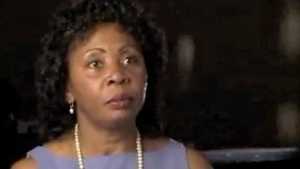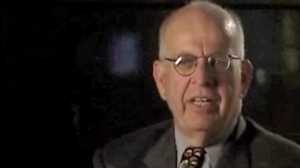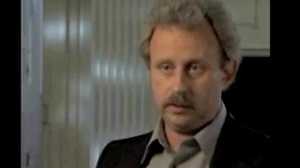Cinematographer James Callanan
Behind the Scenes with Cinematographer James Callanan
Transcript
One of the principal responsibilities for a cinematographer is to bring a look or a style to the film as a whole, not just specific shots. People say they remember certain shots about the film, but ideally that film has to work as a continuum. So all the shots have the same photograph quality and the same look as we call it. And so part of the look is determined in pre-production not in the shooting. And so in preparation for the film, a lot of discussion is had about how the film as a whole is going to look. And one of the choices was with filters, and another choice was with what lenses we were going to use because I strongly believe in using as few lenses as possible.
We did a considerable amount of shooting in Lincoln's childhood homes, the various log cabins in Indiana and in Kentucky, and then we also shot in Mary Lincoln's home in Lexington, Kentucky. And so in Mary Lincoln's home there's all the crystal and there's all this beautiful furniture. In Lincoln's home it's furniture made out of logs. We determined early on that sometimes we were going to be shooting lit interiors and sometimes we were going to have shoot available light outside so we wanted to give each sequence a look. And the way we did that was to have a filter combination that was used to show Lincoln's early life and to show Mary Lincoln's early life. And so Lincoln's early life was in the backwoods so we used a kind of like a yellowish brown filter to give things more of a earth tone and sort of a warmth. And for Mary Lincoln's life we used a red filter because during the scout we noticed that there was lots of red furniture and lots of red stuff. And you know red has a connotation of passion, and had a lot to do with her fiery personality because she was very strong.
In camera effects? We did actually two big scenes. One was a seance scene, another was a scene where Mary Lincoln tells her sister she saw a ghost or she speaks to the ghost of her son every night. And so in the scene where she talks about seeing the ghost of her son, we did a scene where we dollied from the window of her bedroom to her bed while she tells the story to her sister, who's in the bedroom, that she sees a ghost at her bed every night. And so we wanted the scene to start normally, and as she starts talking about ghosts, the scene becomes more ghostlike. And so what we did is, the camera's dollying into the room, we dolly, we had a like a motorized rig that actually moved a piece of glass in front of the lens, and we had various spirals of Vaseline actually on the glass so that that was tracking past the lens as we were tracking into the room. The rig was a monstrous thing. But we also had little clear spots that we would go in and out of, it would be strange and blob like, and then it would, you would see a little touch of the frame that was normal, and then go back to blob like.
To distinguish that from the seance scene, which was successful or unsuccessful depending on what you think about ghosts. But you wanted it to look differently. And so we read in a book that from Mary Lincoln's diaries, she said that there's a veil that separates us from the spirit world, so we said, "let's use veils." So we actually were dollying like two thirds of the way around this round table in this, in the Bartow-Pell mansion in the Bronx, which is a period room similar to the White House in the same period. So we found this one room that we thought could pass for this like one of the Lincoln bedrooms, upstairs rooms. It had all the period furniture and so we dollied around the thing, and we had thin, the thinnest veils we could find, and we had drapes, and we're just dollying through the thing, had a huge candelabra, all the candles are going wild. And then so we shot that whole sequence, all the shots of that through veils.
This is the prop of the bullet that was supposed to have killed Lincoln. The actual bullet in real life was like this big, it was like 3/8ths of an inch, so in order to have a more compelling shot we made a model of the bullet and blew it up to like three inches in diameter. It was made by a New York prop master named George Apostol, who also built what's called the drop rig. The drop rig was basically a long tube that the ball was fit into, and on the bottom of the tube was a plate. And then the plate was attached to a pneumatic cylinder that actually spun the ball before it left the chamber so that the ball would have a rotation as it was dropping. And then we also filled the tube with smoke so George had two switches on the tube, one to trigger the pneumatic cylinder and another with a fan that actually blew smoke through the tube. So he cued the smoke to blow out first because the smoke precedes the bullet, as we saw in our high-speed photography test, so we shot out the smoke first and then the bullet comes bursting through the smoke.
So what we're trying to do in the film is to bring the same level of production value that people have come to expect from a feature film into a documentary film, especially historical films. And so we actually might even have more attention to historical detail than a historical feature film, but we've tried to have the same attention to detail and the lighting and wardrobe and production values than in any feature film that people would see. Because that's the level that people have come to expect when they see a historical film, and so those same techniques with dollies and cranes that's what we're striving for.







